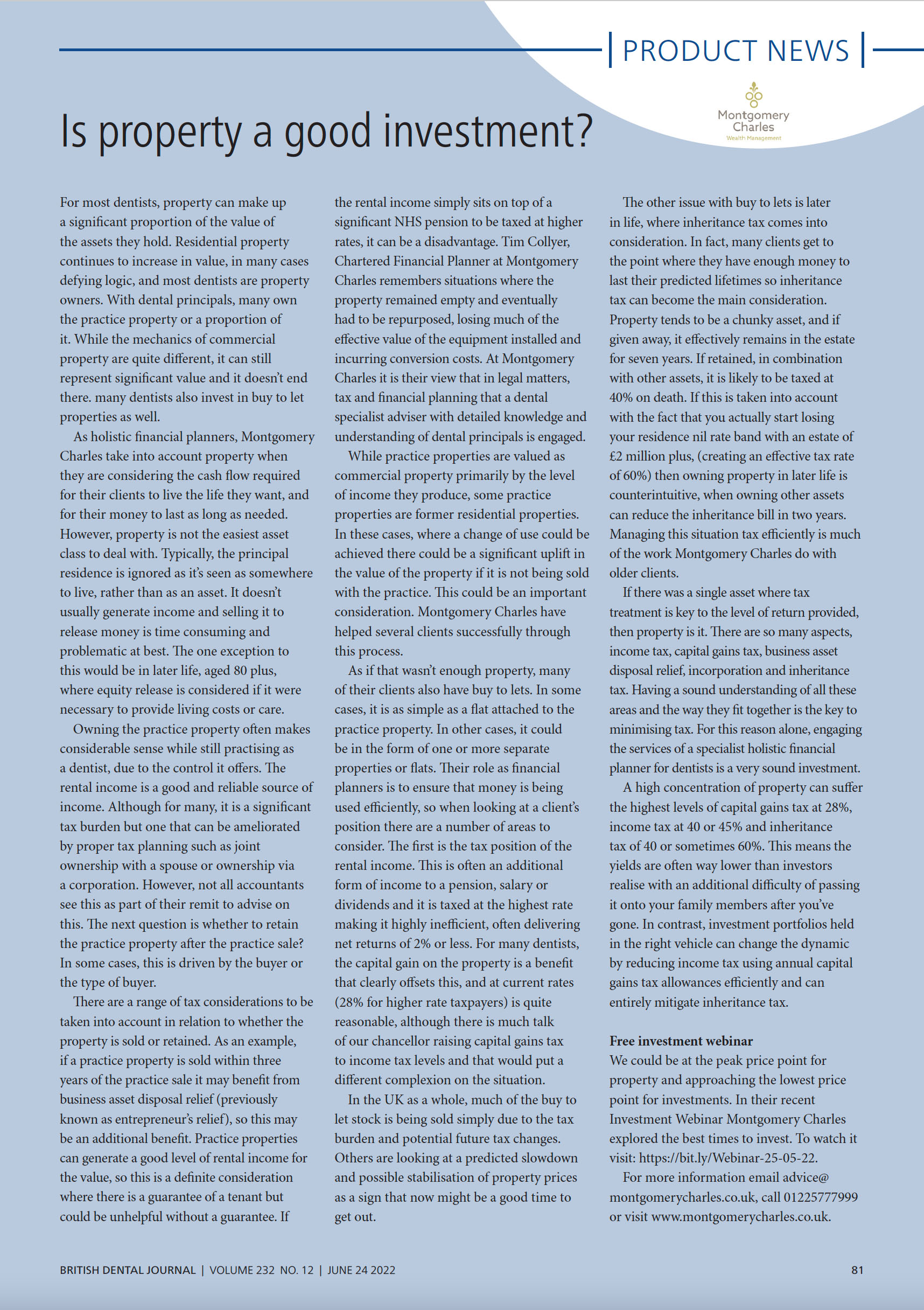
by Tim Collyer – Chartered Financial Planner, Montgomery Charles Wealth Management
Published in the British Dental Journal in June 2022.
Download the article here »
For most dentists, property can make up a significant proportion of the value of the assets they hold. Residential property continues to increase in value, in many cases defying logic, and most dentists are property owners. With dental principals, many own the practice property or a proportion of it. While the mechanics of commercial property are quite different, it can still represent significant value and it doesn’t end there. Many dentists also invest in buy to let properties as well.
As holistic financial planners, Montgomery Charles take into account property when they are considering the cash flow required for their clients to live the life they want, and for their money to last as long as needed. However, property is not the easiest asset class to deal with. Typically, the principal residence is ignored as it’s seen as somewhere to live, rather than as an asset. It doesn’t usually generate income and selling it to release money is time consuming and problematic at best. The one exception to this would be in later life, aged 80 plus, where equity release is considered if it were necessary to provide living costs or care.
Owning the practice property often makes considerable sense while still practising as a dentist, due to the control it offers. The rental income is a good and reliable source of income. Although for many, it is a significant tax burden but one that can be ameliorated by proper tax planning such as joint ownership with a spouse or ownership via a corporation. However, not all accountants see this as part of their remit to advise on this. The next question is whether to retain the practice property after the practice sale? In some cases, this is driven by the buyer or the type of buyer.
There are a range of tax considerations to be taken into account in relation to whether the property is sold or retained. As an example, if a practice property is sold within three years of the practice sale, it may benefit from business asset disposal relief (previously known as entrepreneur’s relief), so this may be an additional benefit. Practice properties can generate a good level of rental income for the value, so this is a definite consideration where there is a guarantee of a tenant but could be unhelpful without a guarantee. If the rental income simply sits on top of a significant NHS pension to be taxed at higher rates, it can be a disadvantage. Tim Collyer, Chartered Financial Planner at Montgomery Charles, remembers situations where the property remained empty and eventually had to be repurposed, losing much of the effective value of the equipment installed and incurring conversion costs. At Montgomery Charles, it is their view that in legal matters, tax and financial planning, a dental specialist adviser with detailed knowledge and understanding of dental principals is engaged.
While practice properties are valued as commercial property primarily by the level of income they produce, some practice properties are former residential properties. In these cases, where a change of use could be achieved, there could be a significant uplift in the value of the property if it is not being sold with the practice. This could be an important consideration. Montgomery Charles have helped several clients successfully through this process.
As if that wasn’t enough property, many of their clients also have buy to lets. In some cases, it is as simple as a flat attached to the practice property. In other cases, it could be in the form of one or more separate properties or flats. Their role as financial planners is to ensure that money is being used efficiently, so when looking at a client’s position there are a number of areas to consider. The first is the tax position of the rental income. This is often an additional form of income to a pension, salary or dividends and it is taxed at the highest rate making it highly inefficient, often delivering net returns of 2% or less. For many dentists, the capital gain on the property is a benefit that clearly offsets this, and at current rates (28% for higher rate taxpayers) is quite reasonable, although there is much talk of our chancellor raising capital gains tax to income tax levels and that would put a different complexion on the situation.
In the UK as a whole, much of the buy to let stock is being sold simply due to the tax burden and potential future tax changes. Others are looking at a predicted slowdown and possible stabilisation of property prices as a sign that now might be a good time to get out.
The other issue with buy to lets is later in life, where inheritance tax comes into consideration. In fact, many clients get to the point where they have enough money to last their predicted lifetimes so inheritance tax can become the main consideration. Property tends to be a chunky asset, and if given away, it effectively remains in the estate for seven years. If retained, in combination with other assets, it is likely to be taxed at 40% on death. If this is taken into account with the fact that you actually start losing your residence nil rate band with an estate of £2 million plus (creating an effective tax rate of 60%), then owning property in later life is counterintuitive, when owning other assets can reduce the inheritance bill in two years. Managing this situation tax-efficiently is much of the work Montgomery Charles do with older clients.
If there was a single asset where tax treatment is key to the level of return provided, then property is it. There are so many aspects, income tax, capital gains tax, business asset disposal relief, incorporation and inheritance tax. Having a sound understanding of all these areas and the way they fit together is the key to minimising tax. For this reason alone, engaging the services of a specialist holistic financial planner for dentists is a very sound investment.
A high concentration of property can suffer the highest levels of capital gains tax at 28%, income tax at 40% or 45% and inheritance tax of 40% or sometimes 60%. This means the yields are often way lower than investors realise with an additional difficulty of passing it onto your family members after you’ve gone. In contrast, investment portfolios held in the right vehicle can change the dynamic by reducing income tax using annual capital gains tax allowances efficiently and can entirely mitigate inheritance tax.
Free investment webinar
We could be at the peak price point for property and approaching the lowest price point for investments. In their recent Investment Webinar, Montgomery Charles explored the best times to invest. To watch it visit: https://bit.ly/Webinar-25-05-22.
For more information email [email protected], call 01225777999 or visit www.montgomerycharles.co.uk.




